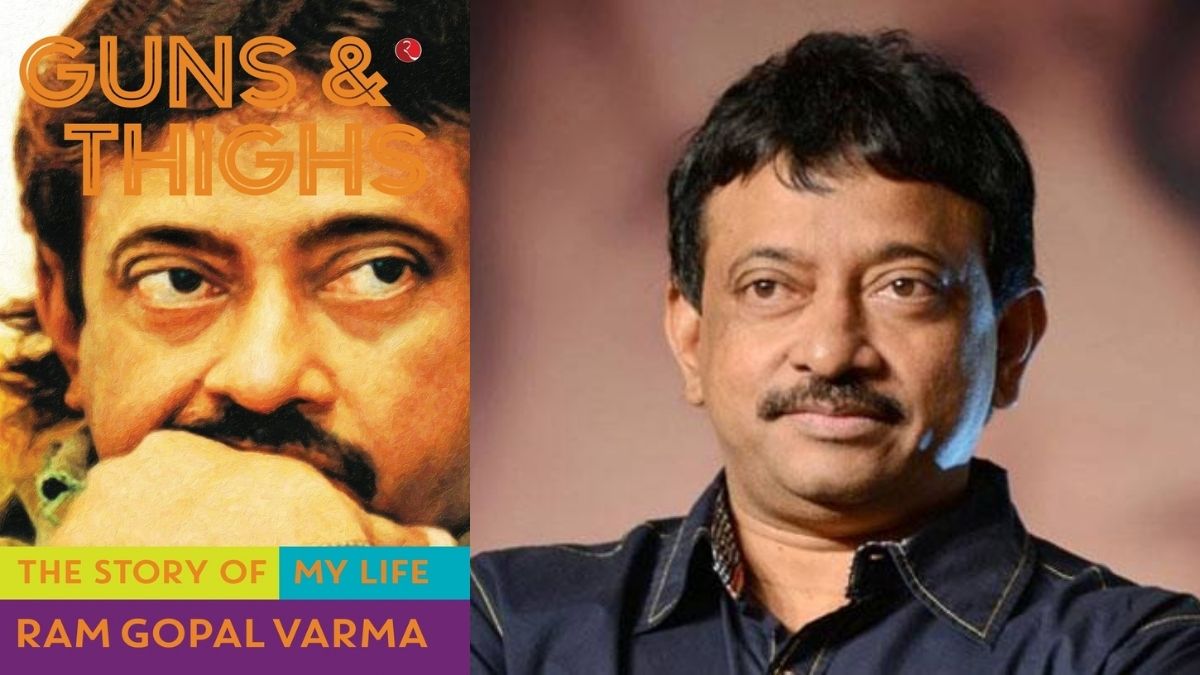
Ramu’s Ram katha!
Book title: Guns And Thighs: The Story Of My Life
Author: Ram Gopal Varma
Does the public disregard Manmohan Singh’s incredible contribution as finance minister in 1991, because he screwed up in his final years as Prime Minister in 2014? Yes, it does. Because public memory is frighteningly short and shallow. History thankfully is kinder.
Would filmgoers in a similar vein not credit Ram Gopal Varma enough for making Satya in 1998, because of the countless crap he created a decade thence—Shiva remake, Satya 2, Phoonk 2, Rakhta Charitra 2, Bhoot Returns, Contract, Darling, Department, Agyaat…
Ummm? Unlikely. Because Satya’s significance, not just as a great film but a game-changer for Bollywood, is now being widely acknowledged. Varma’s role in Bombay film history is fairly safe. But he doesn’t care. And evidently never did. Obsessed as he’s been to make a “thousand films”, or so he’s enjoyed telling the press.
The act of living so much in the present may be a healthy thing. It turns you however into hardly the best memoirist. In his super-short biography that’s showed up with a B-grade title Guns and Thies: The Story of My Life, Varma appears far too concerned with the idea of “hit” and “flop” films, almost apologizing for his own run over the recent past.
The wound of his Sholay remake, Ram Gopal Varma Ki Aag, runs deep as well. As if that’s the only cinematic catastrophe he’s ever delivered. He refers to Aag throughout, even terming the US invasion of Iraq as ‘America ki Aag’.
This sort of fixation would be fine if Varma didn’t have enough good work to talk about, or a fine story of his own to tell. A short and delightful portion in the book is simply his small-town film-buff journal of a daytrip to the stars—whether meeting or working with Sridevi (his wet dream), or Amitabh Bachchan, or even going back as a local hero to the theatre in Vijayawada, where he spent all his college years, and whose manager used to sneer at him for always hanging out doing nothing.
This is when he doesn’t flip-flop on what exactly makes a hit or flop, belabouring the point a few times that a hit happens by accident, and a flop by intent. Whatever that means.
All I could sense is poor editing. Something Varma may not have approve of in a film. Although he repeatedly justifies his repetitiveness as a filmmaker—camera at loony angles, clanking background score etc.—as his unfettered style; his art. Certain people are attracted to his movies, he argues, for the same reasons that others are repulsed by it.
Perhaps. There is no question of scoffing at anything Varma says, if you’ve ever been a fan. I have, and since much before I became a film critic—a profession he disparages as comprising a set of jealous, wannabe filmmakers (“without an exception”) who merely judge his works negatively because they can’t believe he gets the money to make whatever films he wants.
To be fair, there is one popular criticism of even some of his better movies that Varma manages to reverse through his book—the second half here works much better! That’s when he writes about the making of films that matter: Rangeela, Satya, Company, Sarkar, even Naach, unlike Aag.
Even this is hardly extensive. It rarely touches upon talents who pushed forward an alternate yet mainstream agenda or worldview in Bollywood that Varma came in as a fount of hope for: Anurag Kashyap, Vishal Bharadwaj, Shimit Amin, Shriram Raghavan, Jaideep Sahni, Manoj Bajpayee…
Instead of an autobiography or memoir, Guns And Thies is basically a book of interviews, where the interviewee is the author himself. The monologue, mostly frivolous, lacks direction or focus. That’s the sad part. The good part is the voice therefore is wholly Varma’s. I could literally hear him talk, having interviewed him extensively myself.
Looking beyond films, in over a decade and half in Bombay journalism, Varma is indisputably the most entertaining person I’ve met. He converses for effect. Plays silly games. Loves to watch your expression as his eyes roll. The man is totally original.
I still dine out often quoting times spent with him, or his opinions—on children, family, relationships, sex, love, death, money or religion—usually ranging from the only slightly maverick, to the fully macabre sometimes. You get more than a glimpse of that in his book. As you would, if you merely followed his Twitter account.
The gem that ought to go viral on the Internet is how he finds “it highly objectionable to use beautiful women like Katrina Kaif, Aishwarya Rai Bachchan and Deepika Padukone to draw attention to ugly diseases like AIDS and cancer… It’s our duty towards nature and God to strive to keep a woman’s beauty away from ugliness so that it can be framed, protected and worshipped.” Haha. Well.
Review originally published in Open Magazine
Mayank Shekhar’s new book NAME PLACE ANIMAL THING (Stuff about India and pop-culture that make me go, ‘You’re kidding me!) is up for pre-order online
